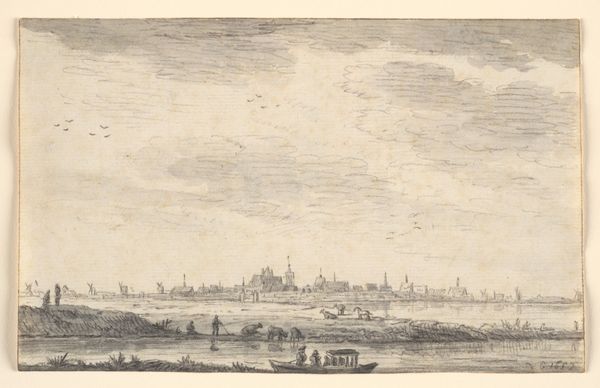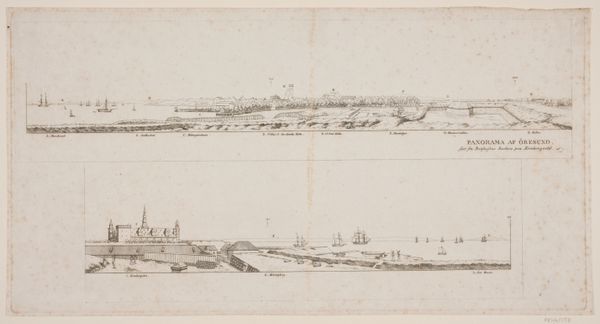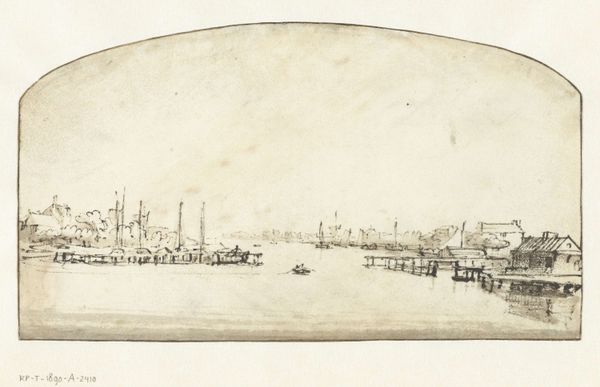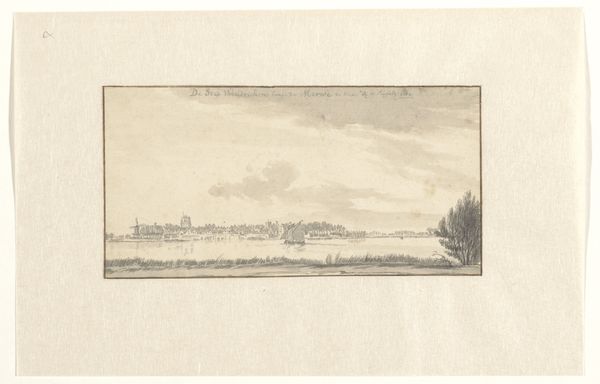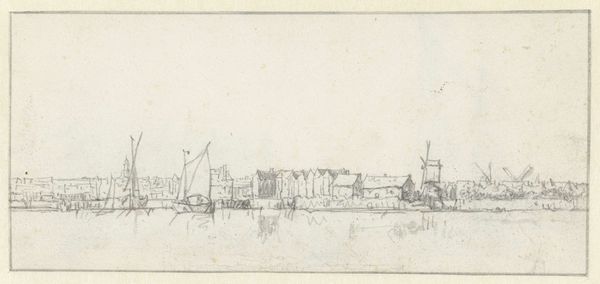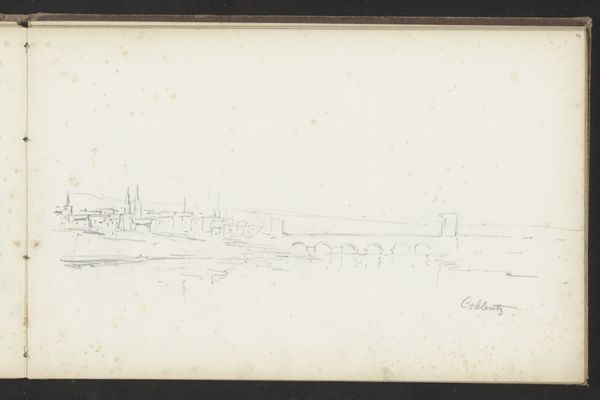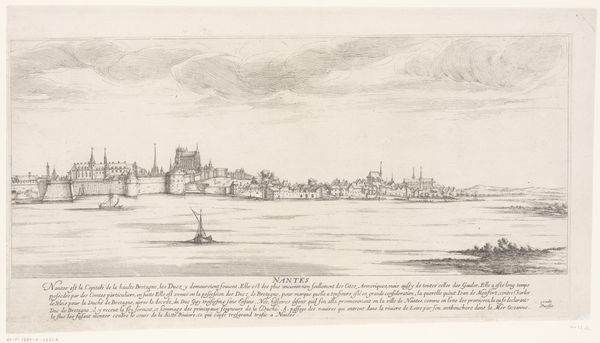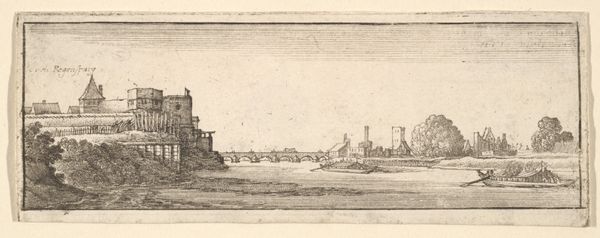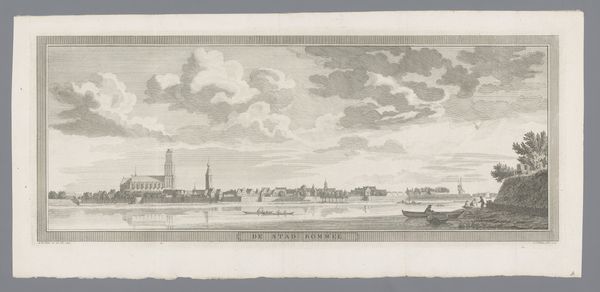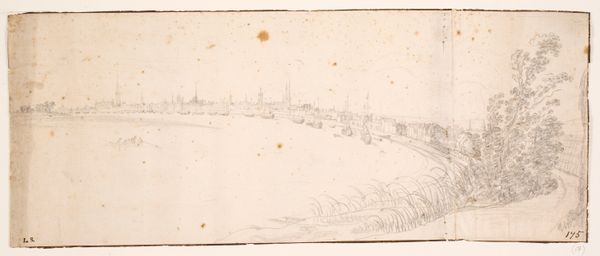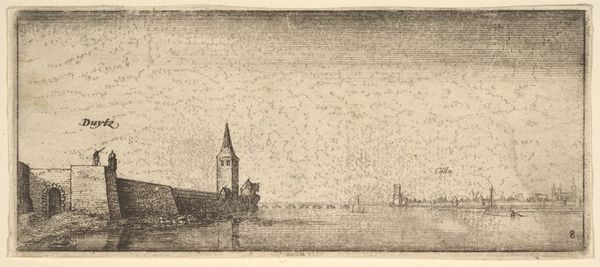
drawing, print, etching
#
drawing
#
baroque
# print
#
etching
#
landscape
#
river
#
etching
#
cityscape
#
building
Dimensions: Sheet: 1 3/4 × 6 7/16 in. (4.5 × 16.3 cm)
Copyright: Public Domain
Curator: This is Wenceslaus Hollar's "Bonn," an etching created between 1642 and 1644. Editor: There's a wonderful tranquility to it, a serene composition using almost minimalist lines. The horizontal emphasis, broken only by the buildings, gives a real sense of peace. Curator: Absolutely. Hollar was a master printmaker, and this work really showcases his technique. Consider the process—the labor-intensive etching of the plate, the inking, the pressing. He was capturing Bonn at a pivotal historical moment during the Thirty Years’ War. Editor: Indeed, but within that historical context, the buildings themselves are carefully delineated, creating a hierarchy. Note the size and detail given to the most important buildings; then consider the strategic positioning of the windmill. It creates such a compelling composition of shapes and shades, it’s like a visual score. Curator: It speaks volumes about urban life, the role of trade, of agriculture, and the societal structures that were prevalent then. The work's scale also suggests something about trade; how might they see themselves represented within their landscape. Editor: Scale is crucial. Even with its relatively small size, it still captures the essence of the city reflecting its identity. There's almost a photographic realism but stylized by the etched medium and artistic conventions of the time. I want to analyze the symbolism here, and what it offers in relation to history of conflict! Curator: These images functioned as records, yes, but also as propaganda tools during periods of conflict to cement the urban area from a position of the war to manufacture power through art production. And beyond just the image, consider how these prints were disseminated, influencing perception and understanding of distant lands for diverse groups across Europe. Editor: I agree. Studying "Bonn," however, you notice the interplay of horizontal lines with vertical architectural features; together these features create a subtle rhythm. The work reveals Hollar's mastery not only in representing the city's architecture but also in creating an emotive and aesthetically striking picture. Curator: Precisely! So, through a social and material understanding of etching, we gained a greater appreciation. Editor: Indeed. Analyzing through a composition and artistic perspective leads to understanding more.
Comments
No comments
Be the first to comment and join the conversation on the ultimate creative platform.
